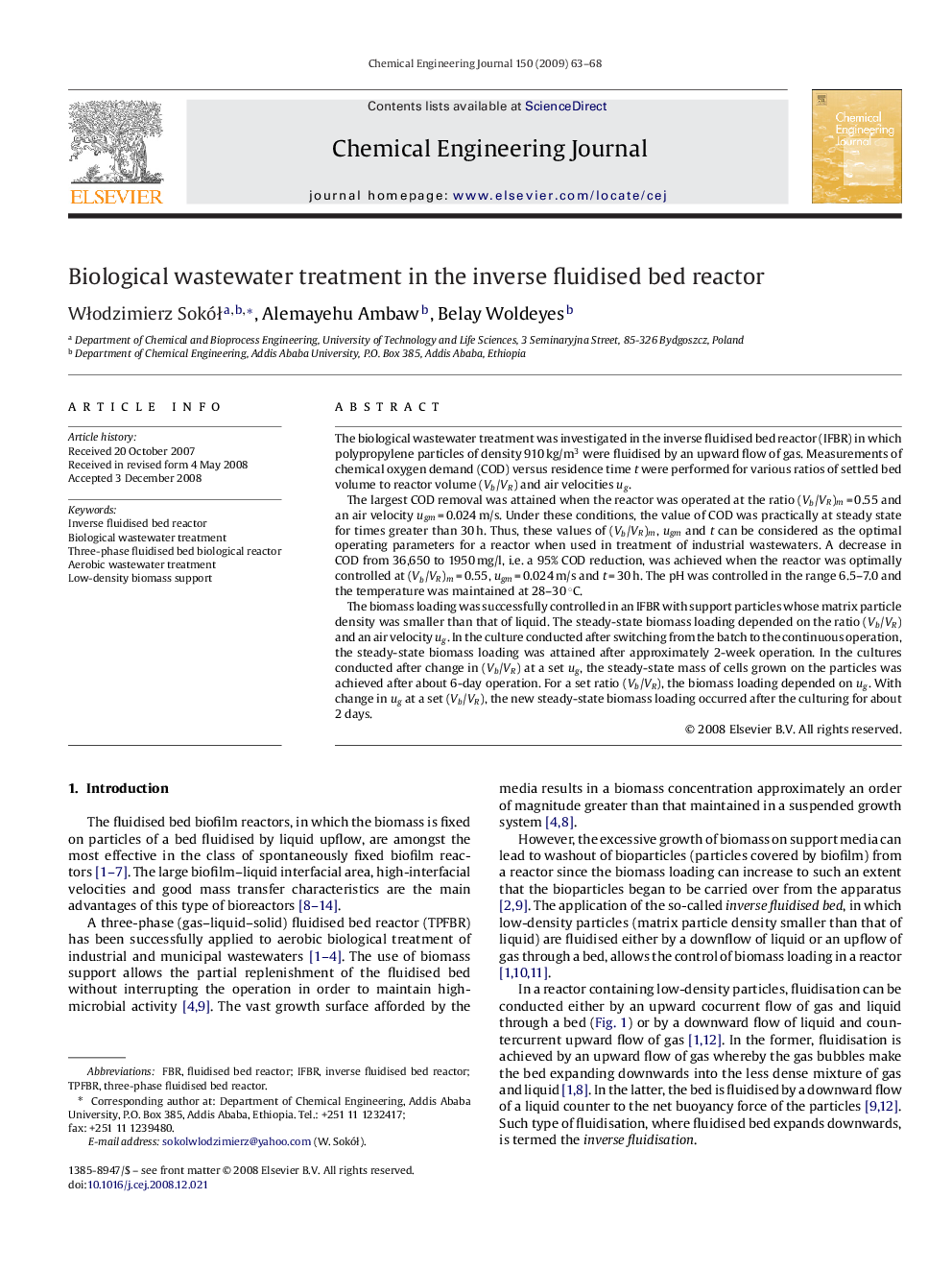| کد مقاله | کد نشریه | سال انتشار | مقاله انگلیسی | نسخه تمام متن |
|---|---|---|---|---|
| 153809 | 456540 | 2009 | 6 صفحه PDF | دانلود رایگان |

The biological wastewater treatment was investigated in the inverse fluidised bed reactor (IFBR) in which polypropylene particles of density 910 kg/m3 were fluidised by an upward flow of gas. Measurements of chemical oxygen demand (COD) versus residence time t were performed for various ratios of settled bed volume to reactor volume (Vb/VR) and air velocities ug.The largest COD removal was attained when the reactor was operated at the ratio (Vb/VR)m = 0.55 and an air velocity ugm = 0.024 m/s. Under these conditions, the value of COD was practically at steady state for times greater than 30 h. Thus, these values of (Vb/VR)m, ugm and t can be considered as the optimal operating parameters for a reactor when used in treatment of industrial wastewaters. A decrease in COD from 36,650 to 1950 mg/l, i.e. a 95% COD reduction, was achieved when the reactor was optimally controlled at (Vb/VR)m = 0.55, ugm = 0.024 m/s and t = 30 h. The pH was controlled in the range 6.5–7.0 and the temperature was maintained at 28–30 °C.The biomass loading was successfully controlled in an IFBR with support particles whose matrix particle density was smaller than that of liquid. The steady-state biomass loading depended on the ratio (Vb/VR) and an air velocity ug. In the culture conducted after switching from the batch to the continuous operation, the steady-state biomass loading was attained after approximately 2-week operation. In the cultures conducted after change in (Vb/VR) at a set ug, the steady-state mass of cells grown on the particles was achieved after about 6-day operation. For a set ratio (Vb/VR), the biomass loading depended on ug. With change in ug at a set (Vb/VR), the new steady-state biomass loading occurred after the culturing for about 2 days.
Journal: Chemical Engineering Journal - Volume 150, Issue 1, 15 July 2009, Pages 63–68